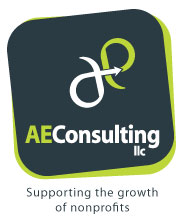While reading Grassroots Grants, by Andy Robinson, although written over 10 years ago, it is apparent that there are core topics within the grants writing process that remain unchanged. Since the publishing of this book, the primary change has been the increased use and dependence on the internet. Otherwise, the challenges, processes, and passions within the work are the same.
Obstacle number 1: understanding what the grantor wants to fund.
Grant seekers face a huge challenge when interpreting what the grant makers want to fund. They first have to determine who would fund them, what they want to fund, and then, how to approach.
Luckily, the advent of websites allows an expedited route to getting information on funding priorities and guidelines; however, grant seekers are still butting up against the written word, which leaves much room for misinterpretation.
Here are some testimonies Robinson points out from his survey to grant makers on what they want from their grant seekers:
The Compton Foundation’s Edith Eddy says, “What really annoys me is people who send us volumes of materials when, as an environmental funder, we ourselves are doing everything we can to conserve paper. Keep it simple, keep it short.”
John Powers of the Educational Foundation of America states, “Every contact you have with a foundation is a window through which your work will be seen. It is important to be accurate, thorough, and prompt. Sloppiness in spelling, grammar, typos, style, and jargon will lead the reader (funder) to infer that the organization is sloppy and possibly ineffective in its work.”
Diane Ives of the Beldon Fund admits, “Quite frankly, the proposal is the least important part… It’s the whole relationship process, building a relationship with the foundation.”
What this clearly states is that there is no one size fits all solution when approaching grants makers. They’re all different. It is up to the seeker to keep in mind the following tips while charting their course:
1. Follow the guidelines and rules they have written on their websites.
2. Aim to establish a relationship with a grantor before writing a proposal – write, call, or email a LOI (Letter of Intent).
3. Avoid jargon and fancy language in your letter – a brief combination of detail including constituent testimonials, data, and anecdotal information is very useful.
4. Edit, proof, peer proof, and repeat.
5. Keep going! And track all your contacts.
Locating the right fit for grants takes time and perseverance, but finding that match can mean saving a program, helping that many more kids learn to fish, keeping one more stomach full. I feel it’s worth it. Any comments from grant seekers or makers are welcome:





No comments:
Post a Comment
Note: Only a member of this blog may post a comment.